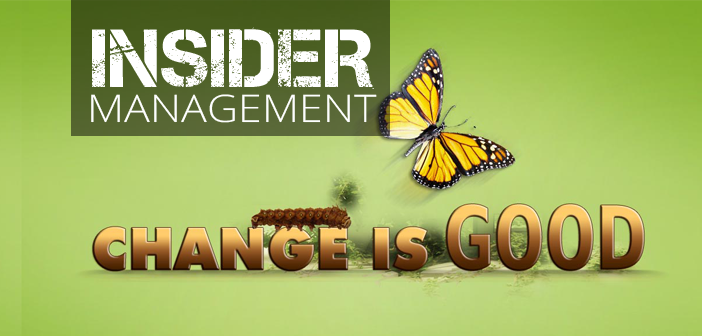The word “change” strikes fear in the heart of many business owners. What we really want is our business to be stable and consistent. We want predictability in revenues, guest attendance, maintenance schedules, customer experience, etc. And when we finally achieve some semblance of equilibrium, we want to keep it that way.
However, despite our best efforts to control the outcome, results can end up being much different from our expectations. This forces us to consider changing what we currently do in order to get a different result. The barriers to change are wrapped in our emotions. Facing change can be scary, risky, and make you feel vulnerable. That’s why, when given a choice, people tend to choose the status quo over change. (This is called the status quo bias.)
In our last edition of Insider Management, we gave you some suggestions for creating an environment that encourages and supports your “positive deviants.” To grow and thrive in an increasingly competitive marketplace, you can leverage the good ideas your employees have, particularly front-line employees.
So, how do we balance the need for change with our resistance to it? Building the capacity to have an effective change conversation is critical. We won’t write a script for you; instead, we’ll look at the change conversation from your point of view and offer some strategies to quiet the voice in your head that keeps whispering, “status quo.”
Get out of your own way. Maybe you’ve tried to change things in the past and it didn’t work. Maybe you got burned by an idea gone bad. Maybe you have trouble giving up control. Whatever the reason for your resistance to change, it’s important to be aware of that reason. The more you understand what triggers you, the easier it will be to move past it so you can really hear your employees.
Listen. Easier said than done, listening is an active task. You need to not only hear the words people are saying, but also listen for other important clues. Joanne may be suggesting a new design for a canopy tour, AND she may be signaling that she’s ready for more of a leadership role. Or, she may be signaling that other current designs are not up to standard. It’s up to you to put her idea into context and determine if your change agent is a future star.
Short, impactful conversations. Time is a precious commodity, and using it effectively is something we all worry about. When it comes to having an effective change conversation, make the most of the time you have with your change agents. Find existing platforms (e.g., weekly check-ins or status updates) to let people know you’re open to their ideas. Simply ask, “What would make your role more effective?” or, “What do you think we need to do to improve X, Y, or Z?” You don’t have to promise you’ll act on their suggestions right away, but this is an efficient way of letting them know that their opinion matters.
Aim for small wins. The talk of change can take on a life of its own. Think of the places you’ve worked in your career. Weren’t many of the conversations you had in the workplace related to concerns about what was going on in the company? “We’re getting a new email system!” “We’re expanding to China!” “We’re hiring more people!” “We’re firing people!” Instead of making change a big initiative, try to make small, safe changes. Adopt the practice of Silicon Valley entrepreneurs who embrace the small bets approach to change. They iterate their companies the way they iterate products, and you can do the same. If one experiment with change fails, you haven’t lost much, and it’s easy to move on to the next one.
Give credit. When something works, call out the person who came up with the idea. Nothing generates more loyalty than recognition. So, as a leader who has done all of the steps listed above, you will have more good ideas to work with. The best follow-through on any idea you receive is to say “thank you.” Even if you don’t implement the idea, saying “thank you” will let folks know that you’re open to ideas and you take them seriously.
Encouraging your employees’ engagement in the change conversation will not only build their self-confidence, it will build their confidence in you. And, with more change agents looking out for the business, you won’t have to fear change as much.






